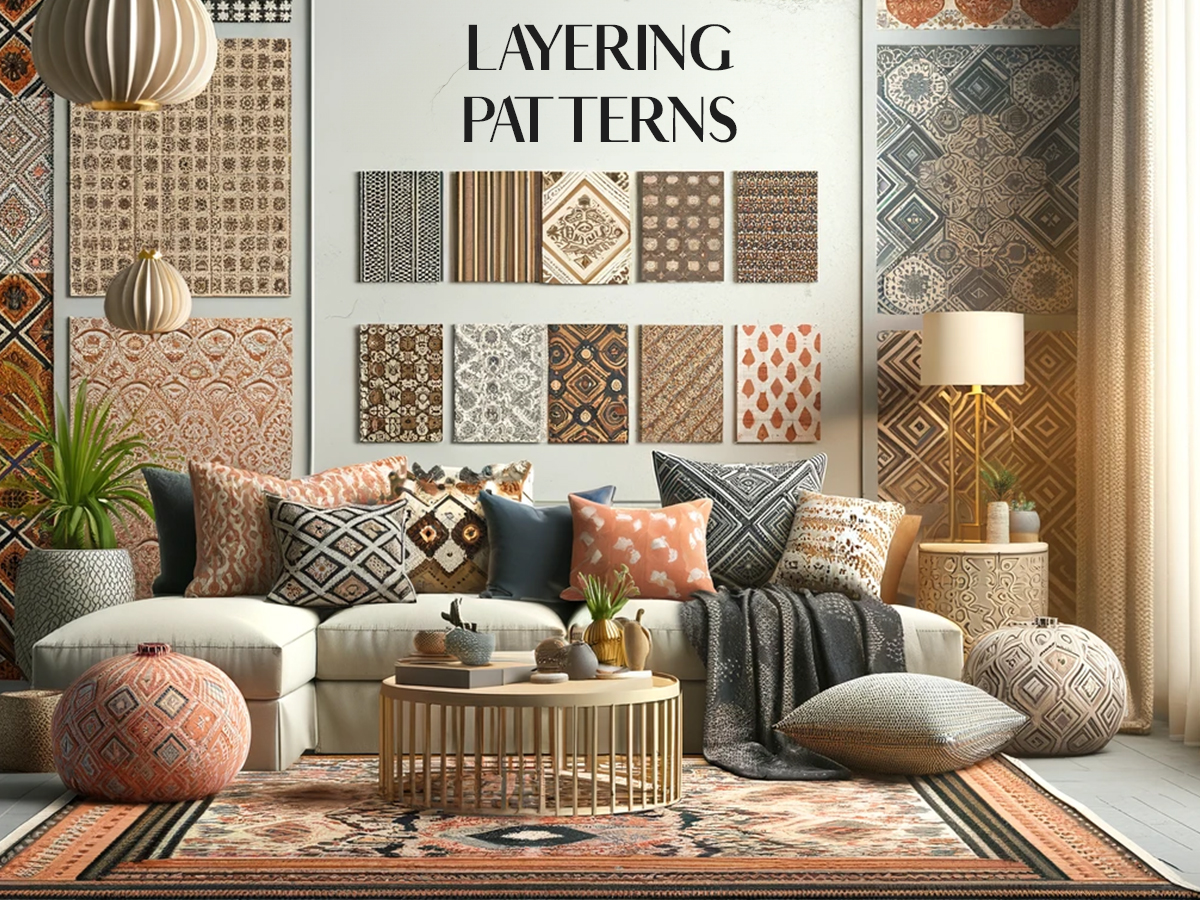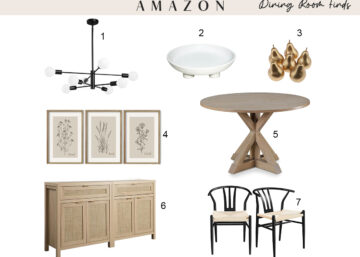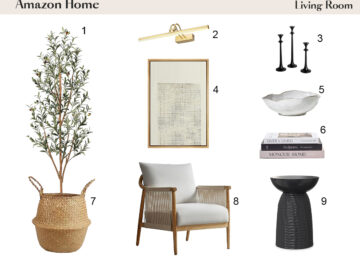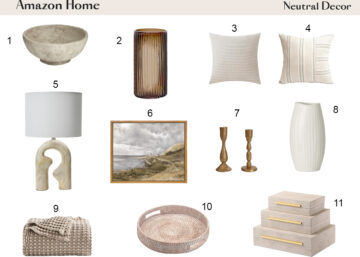Layering Patterns: A Guide to Mixing and Matching
Understanding Patterns
In the realm of interior design, the use of patterns can dramatically alter the perception and feel of a space. However, the art of selecting and integrating patterns extends beyond mere aesthetics; it involves a deliberate strategy to balance harmony and contrast, ensuring each pattern serves a purpose. This section delves into the seldom-discussed nuances of choosing and utilizing patterns with a fresh perspective that caters to architects, designers, and homeowners alike.
Types of Patterns
Patterns in interior design are commonly categorized into geometric, floral, abstract, and textile. Each category carries its unique influence:
- Geometric Patterns: Often used for their symmetry and balance, geometric patterns can create a sense of order and structure in a room. They are particularly effective in spaces that require a sleek, modern look.
- Floral Patterns: These patterns can introduce a soft, organic touch to spaces, making them feel more inviting and warm. Floral designs are versatile and range from traditional motifs to modern, stylized interpretations.
- Abstract Patterns: Ideal for adding a dynamic and contemporary element to interiors, abstract patterns often serve as focal points due to their bold and unpredictable nature.
- Textile Patterns: These encompass a variety of techniques and styles, including embroidery, weaving, and printing, offering texture and depth to interiors through their intricate details.
Choosing the Right Scale and Proportion
The scale and proportion of patterns play a crucial role in interior design, influencing the visual weight and hierarchy of elements within a space. When patterns are scaled correctly, they can create a sense of unity and cohesion, but when misapplied, they can overwhelm or underwhelm the observer.
- Scale: The size of the pattern should be chosen based on the size of the room and the surfaces it will cover. Large-scale patterns can make a grand statement in spacious rooms but might overpower smaller, more intimate spaces.
- Proportion: Proportion refers to the relationship between different patterns used within the same space. Mixing patterns of varying scales can produce a layered, well-thought-out aesthetic while maintaining a proportionate balance prevents any one pattern from dominating the scene.
By understanding these critical elements, professionals and enthusiasts can elevate their design projects from merely functional to profoundly impactful. This approach to patterns not only enhances the visual appeal of a space but also personalizes it, reflecting the individuality of those who inhabit it.
The Basics of Mixing Patterns
Mixing patterns is an art form that can transform any space into a visual symphony of color, texture, and form. However, achieving a balanced, cohesive look requires understanding a few fundamental principles. Here, we delve into the foundational strategies for blending patterns effectively, ensuring they enrich the environment without clashing.
Color as the Unifying Element
The pivotal role of color in pattern mixing cannot be overstated. Color serves as the backbone that holds the design together, making the selection of a harmonious color palette essential.
- Harmony and Contrast: Start by selecting a base color that appears in all the patterns you intend to use. This can be a neutral tone or a more vibrant hue, depending on the desired impact. From this base, incorporate additional colors that complement or contrast with it effectively, creating a dynamic yet unified look.
- Color Intensity: Keep the intensity of the colors similar across different patterns to maintain visual coherence. For example, pastel patterns can be mixed together, or vibrant and bold hues can blend, but mixing pastels with saturated colors might create a disjointed appearance.
Balancing Patterns
Achieving the right balance between various patterns ensures that the space feels thoughtfully curated rather than chaotic. This balance is achieved by considering pattern size, type, and placement.
- Mixing Different Scales: A key technique in pattern mixing is to combine large, medium, and small-scale patterns. The large-scale pattern often serves as the focal point, medium-scale patterns support the main pattern without competing with it, and small-scale patterns fill in the background, adding depth and complexity.
- Pattern Types: Combining different types of patterns can add interest and movement to a room. For example, a large geometric pattern on the floor can be complemented by floral cushions and a striped throw. This mix should be governed by the rules of contrast and similarity to prevent visual conflict.
- Placement and Proximity: The spatial arrangement of patterns impacts their interaction. Patterns that are close to each other should have some common elements, whether it’s color, style, or scale, to create a sense of continuity. Patterns placed farther apart can afford more diversity, allowing for bolder contrasts.
Practical Tips for Mixing Patterns
While understanding the theory behind pattern mixing is essential, practical application can often seem daunting. Here are some actionable tips to guide the process:
- Start with a Neutral Base: When in doubt, begin with a neutral color palette for the room’s walls and large furniture pieces. This neutral backdrop allows patterns to stand out without overwhelming the senses.
- Use Patterns in Layers: Approach pattern mixing as you would layer clothing. Start with a base layer (like an area rug), add a secondary layer (such as drapery), and top it off with accent pieces (like pillows and throws). Each layer should contribute to the overall theme and balance of the room.
- Test Before You Commit: Use swatches and samples to see how patterns look together in the intended space under different lighting conditions. This step can prevent costly mistakes and help visualize the final look before making permanent changes.
By mastering these basics, designers and homeowners alike can confidently experiment with patterns, enhancing spaces with creativity and personal expression. The key lies in balancing the elements of color and pattern with a keen eye for aesthetic cohesion, turning ordinary rooms into extraordinary environments.
Advanced Techniques in Pattern Mixing
Building upon the fundamentals, advanced techniques in pattern mixing require a sophisticated approach that can further elevate interior spaces to new levels of design excellence. This segment explores deeper, more nuanced strategies for professionals and enthusiasts who are ready to experiment boldly with their aesthetic compositions.
Layering Patterns in Different Materials
The interaction of patterns across diverse materials brings texture and depth to a space, enriching the sensory experience and adding layers of complexity to the design.
- Textural Contrasts: Combining patterns with different textures can create a tactile dimension that enhances the visual impact. For example, a smooth, geometric-patterned silk wallpaper could contrast the rough texture of a wool tartan throw, providing a sensory contrast that is both visually and physically appealing.
- Material-specific Patterns: Certain patterns are inherently associated with specific materials, like damask in fabric or parquet in wood flooring. Leveraging these associations can anchor a space’s theme and add authenticity to the design narrative.
Impact of Lighting on Patterns
Lighting plays a crucial role in how patterns are perceived. The interplay of light and shadow can dramatically transform the appearance of patterns throughout the day, offering dynamic aesthetics that change with the light conditions.
- Natural vs. Artificial Lighting: Patterns can appear differently under natural and artificial lighting. Designers should consider how sunlight affects colors and contrasts at various times of the day, as well as how artificial lighting will highlight or subdue these elements at night.
- Directional Lighting: Strategic use of spotlights, track lighting, or sconces can emphasize or soften certain aspects of the pattern, creating focal points or blending them into the background. This technique can be used to manipulate the mood and focus within a room.
Practical Applications of Advanced Techniques
Patterns in Residential Spaces
In residential design, advanced pattern mixing can be used to personalize living areas and create unique environments that reflect the inhabitants’ personalities and lifestyles.
- Personal Spaces: In areas like bedrooms, pattern mixing can be tailored to reflect individual tastes, using a combination of personal items and designer pieces. For example, blending heirloom fabrics with contemporary patterns can create a bridge between tradition and modernity.
- Kids’ Rooms: Children’s rooms offer a playful canvas for mixing patterns. Bright colors and diverse patterns can stimulate creativity and joy, such as mixing animal prints with stars and moons for a thematic adventure space.
Patterns in Commercial Design
Commercial spaces benefit from pattern mixing by reinforcing brand identity and enhancing the customer experience.
- Thematic Consistency: For businesses, consistent thematic patterning can reinforce the brand and create memorable experiences. A café might use floral patterns combined with vintage textiles to evoke a cozy, retro ambiance.
- Functional Zoning: In larger commercial spaces, different patterns can delineate areas without the need for physical barriers, using floor patterns to guide traffic or ceiling patterns to signify different zones within a store.
By mastering these advanced techniques, designers and architects can utilize patterns not just as decorative elements, but as integral components of spatial design that respond to both functional needs and aesthetic desires. These methods allow professionals to craft environments that are both innovative and deeply reflective of their clients’ visions.
Practical Applications
The strategic application of pattern mixing transcends aesthetic considerations, directly influencing the functionality and perception of spaces. For our diverse audience ranging from architects and interior designers to real estate developers and commercial business owners, understanding how to effectively deploy patterns can be pivotal in achieving specific design goals.
Patterns in Residential Spaces
Home environments provide a canvas for personal expression and functional design. Here, pattern mixing isn’t just about style; it’s about creating spaces that resonate on a personal level while fulfilling daily living needs.
- Living Rooms: In living areas, patterns can define spaces and dictate flow. A large rug with a bold, geometric pattern can anchor the seating area, while softer, complementary patterns on throw pillows and drapes can delineate a reading nook or a visual pathway that guides the eye through the space.
- Bedrooms: The bedroom offers a retreat where patterns can play a role in soothing or invigorating the environment. Subtle, serene patterns in soft colors can be used in bedding and curtains to foster relaxation, while vibrant patterns might frame a headboard or feature wall to energize the space.
Patterns in Commercial Design
In commercial settings, the intentional mixing of patterns can significantly enhance the functionality of the space, affecting everything from client impressions to employee productivity.
- Retail Spaces: In retail environments, pattern mixing can guide customer behavior and highlight product areas. Distinctive floor patterns can lead a customer through the store, while contrasting wall patterns can spotlight merchandise and promotional displays.
- Offices: In office designs, patterns can be used to delineate different work zones without erecting barriers, such as using varied carpet designs to separate workstations from communal areas. This not only adds visual interest but also serves functional purposes by intuitively signaling the use of each area.
Patterns in Specialized Facilities
Design strategies for specialized facilities like healthcare centers and educational institutions also benefit from the thoughtful application of patterns.
- Healthcare Facilities: In healthcare settings, where the environment can significantly impact patient recovery, calming patterns that evoke nature can be beneficial. Wallpapers or floorings that feature subtle, organic patterns can reduce stress and create a more healing environment.
- Educational Spaces: Schools and universities can use vibrant and diverse patterns to stimulate learning and creativity. Classroom walls, for instance, can feature inspiring patterns that are both educational and stimulating, such as historical timelines in history classrooms or scientific motifs in laboratories.
Case Studies
Drawing on real-world applications, we can illustrate how effective pattern mixing contributes not only to aesthetic appeal but also to practical solutions in various settings.
Success Stories
- A Boutique Hotel Lobby: A case study of a boutique hotel lobby where designers used an eclectic mix of bold patterns to create a dynamic, welcoming atmosphere that immediately communicates the unique personality of the hotel to guests.
- A Residential Renovation: A homeowner’s renovation project demonstrates how patterns were used to visually expand the space and reflect the family’s vibrant lifestyle, with before-and-after images showing the transformation.
Common Mistakes and Lessons Learned
- Overwhelming Small Spaces: One common mistake in residential design is using large, busy patterns in small spaces, making the area feel cramped. This section will discuss how to correct such issues by choosing the appropriate scale and color.
- Mismatching Corporate Identity: In commercial design, failing to align the pattern choice with the brand’s identity can confuse clients and dilute the branding message. This part would explore how a business corrected its course by realigning its interior design with its corporate ethos.
By exploring these practical applications, this section not only provides actionable insights but also inspires confidence among our audience, empowering them to employ pattern mixing effectively in their projects, ensuring every detail aligns with both aesthetic desires and functional requirements.
Case Studies
The real-world application of pattern mixing in various design projects highlights its potential to transform spaces profoundly. Here, we explore some illustrative case studies that demonstrate the effectiveness of innovative pattern-mixing techniques. These examples cater to a broad range of our target audience, from real estate developers and commercial business owners to interior designers and homeowners, providing a tangible look at the practical and aesthetic benefits of adept pattern integration.
Boutique Hotel Lobby Transformation
Project Overview: A boutique hotel aimed to create a distinctive and inviting lobby that would immediately convey its unique brand identity to guests upon entry.
Design Challenge: The initial lobby space was uninspiring and utilitarian, lacking character and a sense of welcome crucial for guest first impressions.
Solution Implemented: Designers employed a bold mix of patterns that combined traditional luxury with modern chic. A large-scale geometric pattern on the floor set a dynamic tone, while richly textured wallpaper patterns added depth and a touch of opulence. Accents were strategically placed using floral patterns on upholstery to soften the geometric dominance and add a welcoming touch.
Outcome: The redesigned lobby significantly enhanced the hotel’s appeal, effectively reflecting the brand’s unique identity and increasing guest satisfaction.
Residential Renovation: Enhancing a Family Home
Project Overview: A family desired to renovate their suburban home to make it feel larger and more aligned with their vibrant lifestyle.
Design Challenge: The original home felt cramped and outdated, with small, poorly lit rooms that did not suit the family’s energetic and social lifestyle.
Solution Implemented: Designers introduced a clever use of pattern mixing to visually expand the spaces and add life to each room. They utilized vertical stripes in the hallways to elongate the areas, and playful, colorful patterns in the living areas and children’s rooms to create engaging environments.
Outcome: The renovation led to a visually larger and more joyful home environment. The strategic use of patterns not only maximized the perception of space but also mirrored the family’s dynamic personality, resulting in a home that truly feels like its own.
These case studies underscore the transformative power of pattern mixing when applied with thoughtful consideration of the space’s purpose and the users’ needs. They illustrate not just the enhancement of aesthetic appeal but also the practical improvements in space utilization and personalization, showcasing the depth of impact that expert interior design can achieve.
Conclusion
Embracing the Future of Pattern Use in Interior Design
As we continue to explore and understand the complex and intricate world of pattern mixing in interior design, the boundaries of creativity and functionality are constantly being redefined. The convergence of aesthetic appeal and practical application in pattern use not only enhances the environments we inhabit but also enriches our interactions within them.
Future Trends in Pattern Use
Looking forward, the integration of technological advancements with traditional design principles promises to usher in a new era of pattern use. Digital tools and augmented reality will enable designers to experiment with patterns in real time, offering clients a preview of how different patterns will look and feel in their spaces before making any physical changes. This technology-driven approach will likely lead to more personalized and precise designs that are perfectly aligned with individual preferences and functional needs.
Additionally, sustainability concerns are beginning to play a significant role in the selection of patterns and materials. Eco-friendly and recycled materials are gaining popularity, and their unique textures and appearances are influencing pattern trends. Designers are increasingly tasked with incorporating these elements in a way that is both environmentally conscious and visually striking.
Encouraging Experimentation
The dynamic field of interior design invites professionals and enthusiasts alike to push the boundaries of traditional patterns and explore new possibilities. Whether it’s through the bold mixing of culturally inspired patterns or the subtle layering of textures and prints, there is immense scope for innovation.
This guide aims to inspire you to embrace the complexity and beauty of pattern mixing, urging you to experiment and discover new ways to enhance both the functionality and aesthetics of your spaces. Remember, each pattern holds the potential to transform a plain space into a spectacular one. Let your creativity and the unique needs of your clients guide your designs, ensuring that every project not only looks exceptional but feels personal and purposeful.
With these insights and techniques, we encourage you to look beyond conventional ideas and embrace the evolving trends and possibilities in the world of interior design.








